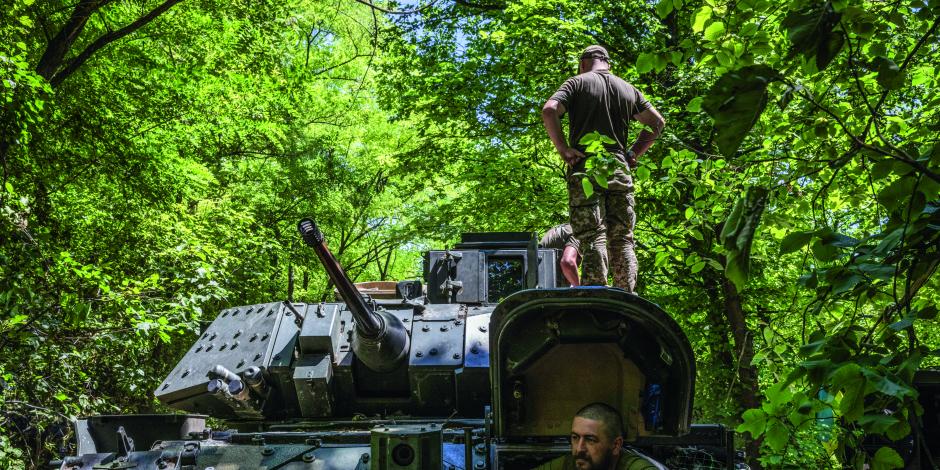Starten Sie den Audio-Text
Mit dem Audio-Player können Sie sich den Text anhören. Darunter finden Sie das Transkript.
The listening exercises in Business Spotlight Übungsheft (p. 5) are based on the article “Manufacturing in a time of war” (Names & News, p. 8). Here, we provide you with the audio file and transcript.
Click here to open the transcript
Manufacturing in a time of war
Denmark’s prime minister, Mette Frederiksen, says Europe must spend more on defenseVerteidigungdefense, particularly as the war in Ukraine has highlighted the difficulty of supplying armies in a long-running conflict. However, more spending is just one part of the solution. The U.S. defense budget for 2024, for example, is $842 billion — about 3.5 percent of the country’s GDP (gross domestic product)BIP (Brutto- inlandsprodukt)GDP. And yet, even America has limitations in how much, and how quickly, its defense industry can supply.
After the Cold War, the U.S. military industrial base changed dramatically, from around 50 smaller companies in the early 1990s to several big defense contractorAuftragnehmer(in)contractors today. Production got leanschlankleaner, adopt sth.etw. übernehmenadopting civilian manufacturing concepts, like producing “just in time,” to save space and costs. Now, many people think this is the cause of shortageMangelshortages in ammunitionMunitionammunition and other supplies, arguing that by not keeping warehouseLagerwarehouses full of parts ready to go, production cannot surgerasch ansteigensurge to meet a sudden rise in demand.
Others say that cost-efficient strategies free sth. upetw. verfügbar machenfreed up funds for research and other requirements. The problem seems to be that Western militaries had planned for a different kind of war. “Over time, the industrial base has prioritized efficiency over resiliencyBelastbarkeit; hier: Widerstandsfähigkeitresiliency,” William A. LaPlante, of the U.S. Department of Defense, said in a speech. “No one anticipate sth.etw. vorhersehenanticipated the prolongedandauerndprolonged high-volumehier: mit großem Militäreinsatzhigh-volume conflict we’re seeing in Ukraine.”


